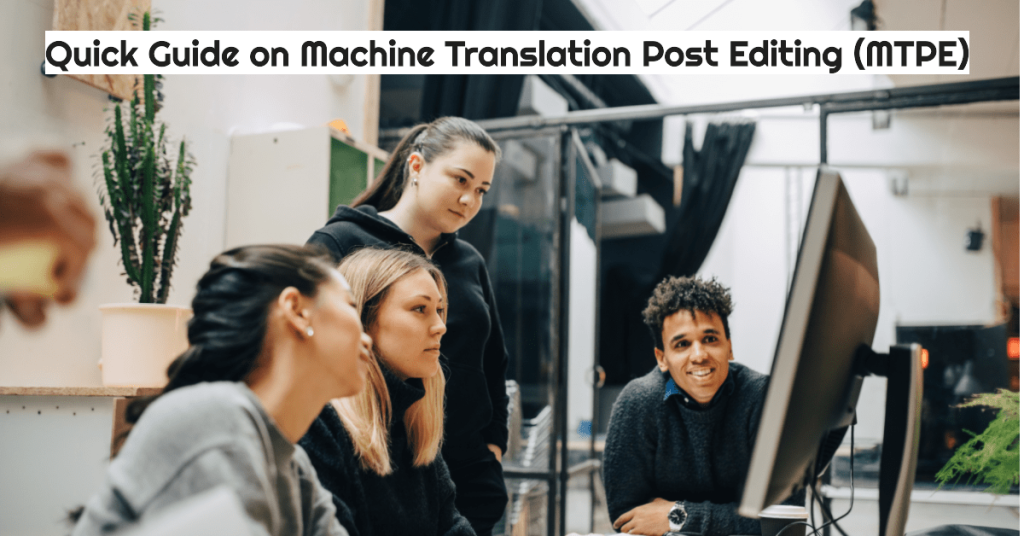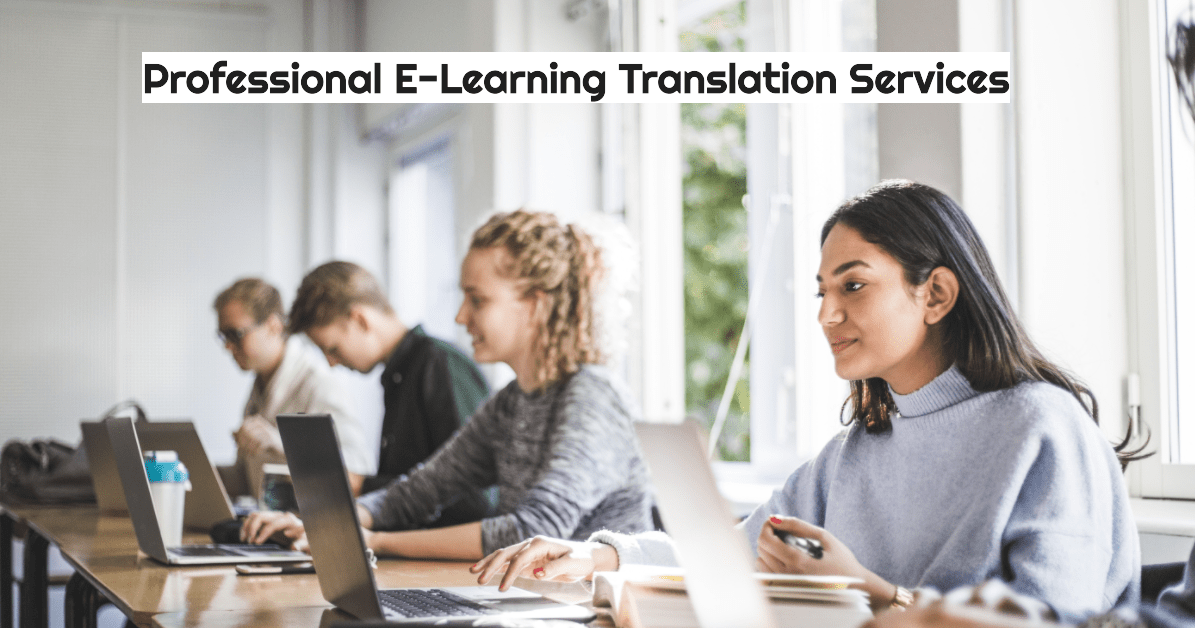Quick Introduction to MTPE (Machine Translation Post Editing)
As global communication increases, businesses today generate more multilingual content than ever before.
From websites and marketing campaigns to technical documentation and HR guidelines, organizations must deliver information quickly and accurately across multiple languages.
This growing demand has pushed companies to seek translation solutions that balance quality, cost, and speed.
Among the most effective solutions available is Machine Translation Post-Editing (MTPE)—a modern translation approach that combines the speed of machine translation systems with the expertise of human linguists.
MTPE bridges the gap between AI-powered translation and traditional human translation, producing high-quality results faster and more efficiently.
In this expanded guide, we’ll walk through what MTPE is, how it works, the benefits it offers, the different types of post-editing, and what to look for in a provider.
This article also serves as a guide to machine translation, explaining the role of neural machine translation engines, glossaries and translation memories, and how MTPE fits into a modern translation workflow.
What Is Machine Translation Post-Editing - MTPE?
Machine Translation Post-Editing (MTPE) is a process that involves editing and refining the machine-generated translation produced by a machine translation engine or neural machine translation system.
In other words:
The machine produces the first draft.
A human linguist improves it for accuracy, fluency, tone, and cultural relevance.
This combination—often referred to as hybrid translation—leverages the efficiency of machine translation while ensuring the quality that only human editing can guarantee.
The goal of MTPE is to provide high-quality translations at scale, using the speed of machine translation but avoiding problems commonly found in raw MT output.
MTPE serves as the middle point between traditional human translation and fully automated AI translation.
Why Machine Translation Post-Editing (MTPE) Matters?
Machine translation may deliver fast results, but it often lacks contextual understanding, nuance, and industry-specific terminology.
This is why machine translation post-editing offers the best of both worlds: rapid translation production with human refinement.
Companies use MTPE because it:
Reduces translation costs
Speeds up delivery timelines
Scales to large volumes
Maintains consistent terminology
Improves the translation quality of machine output
MTPE has become a core part of modern translation solutions, especially in industries requiring frequent updates or high translation volumes.
Types of Machine Translation
Before understanding MTPE, it helps to know the major types of machine translation:
1. Rule-Based Machine Translation (RBMT)
Uses linguistic rules and dictionaries; accurate but slow and outdated.
2. Statistical Machine Translation (SMT)
Relies on statistical models trained on bilingual text; faster but less fluent.
3. Neural Machine Translation (NMT)
The current standard.
Uses deep learning to generate natural, fluent translations.
Most top machine translation tools today—like Google, DeepL, and custom enterprise engines—use NMT.
These modern neural machine translation engines produce much smoother and more contextually aware output, making them ideal for the MTPE process.
How the Machine Translation Post-Editing (MTPE) Process Works?
A well-executed MTPE workflow blends automation with linguistic expertise.
Let’s break down the full machine translation post-editing process.
1. Preparation and Setup
Before translation begins, the provider prepares:
Glossaries and translation memories
Style guides
Client-specific terminology
A defined translation workflow
Domain-specific references
These resources ensure the machine translation system has context, and the editor knows the expected output.
2. Machine Translation Output
The content is first processed through an MT engine (DeepL, Google MT, custom AI engines, etc.).
This initial machine translation output forms the foundation for post-editing.
While modern neural machine translation is impressive, the output of machine translation can still:
Misinterpret tone
Misuse terminology
Struggle with cultural nuances
Produce unnatural phrasing
Break grammar rules
This is where human expertise becomes essential.
3. Human Post-Editing
A trained post-editor, often a professional translator or native linguist, improves the machine’s draft. They:
Correct grammatical errors
Adjust terminology and wording
Localize cultural elements
Refine style and tone
Validate meaning against the source text
Improve sentence flow
Ensure consistency
Follow machine translation post-editing best practices
This step elevates raw MT into high-quality, professionally readable content.
4. Quality Assurance and Review
A second round of review ensures:
Terminology accuracy
Consistency with glossaries and translation memories
Correct formatting
Compliance with client guidelines
Fewer “machine-like” sentences
This additional step is essential when producing consumer-facing or brand-sensitive translations.
Types of Post-Editing: Light vs. Full
Understanding the types of post-editing helps businesses determine which level suits their translation needs.
Light Post-Editing
Light post-editing focuses on making the text understandable and accurate, without perfecting style or tone.
Suitable for:
Internal communications
Research documents
Technical drafts
Data-heavy reports
It’s fast, efficient, and cost-effective.
Full Post-Editing
Full post-editing transforms the MT output into a polished, publication-ready translation. The editor improves:
Tone
Naturalness
Cultural relevance
Brand voice
Readability
Terminology accuracy
Full post-editing often matches or exceeds the quality of human translation services.
Benefits of Using MTPE Services
Companies choose MTPE for several compelling reasons:
1. Speed and Efficiency
MTPE dramatically shortens the translation process compared to traditional translation methods, thanks to the speed of machine translation. Editors spend less time translating from scratch and more time refining.
2. Cost Savings
Because MT handles the initial draft, MTPE often costs significantly less than fully manual professional translation.
3. Scalability
Need to translate thousands of product listings or manuals?
MTPE is built for scale.
4. Higher Quality With Human Review
Even with MTPE, human review ensures:
natural phrasing
accurate tone
cultural sensitivity
correct terminology
This solves the common shortcomings of raw machine output.
5. Integrates With Modern Translation Technology
MTPE works seamlessly with:
translation memories
translation management systems
neural MT engines
Organizations can use MTPE as their primary workflow or integrate it with existing translation solutions.
What to Look for in an MTPE Service Provider
Choosing the right provider is critical for successful results. Consider the following:
1. Expertise in Your Industry
Your translator or post-editor should know your domain—finance, legal, medical, tech—ensuring accurate terminology and fewer edits.
2. Skilled Post-Editors and Linguists
A provider should offer:
professional translators
trained MT post-editors
native speakers
editors who understand MT behavior
experts in editing machine-generated translations
Human expertise is the backbone of successful MTPE.
3. Advanced Machine Translation Systems
Look for providers using:
neural MT engines
custom-trained MT models
domain-specific MT systems
efficient MT + TMS integration
The better the engine, the better the output.
4. Quality Assurance Processes
QA should include:
glossary checks
style guide alignment
terminology accuracy
multi-stage review
consistency monitoring
5. Scalable and Flexible Workflows
The provider should handle both small and massive translation projects efficiently.
6.Transparent Pricing
Providers should explain:
light vs. full post-editing pricing
volume rates
subject-matter complexity costs
rush-job fees
Why MTPE Is Essential for Modern Global Business
| Feature | MTPE | Traditional Human Translation |
|---|---|---|
| Speed | Much faster | Slower |
| Cost | Lower | Higher |
| Quality | High (with full post-editing) | Highest |
| Scalability | Excellent | Limited |
| Machine Involvement | Yes (MT) | No |
| Best For | Large volumes, tight deadlines | Sensitive or creative content |
When comparing MTPE vs. traditional human translation, MTPE offers clear advantages for businesses needing speed and cost control without compromising quality.
MTPE isn’t simply a trend—it’s a core component of next-generation translation. With the rise of AI translation, machine translation systems, and automation tools, businesses now require translation methods that adapt to the pace of global commerce.
MTPE provides:
speed
quality
consistency
affordability
It’s the practical choice for companies managing large volumes of multilingual content.
Ready to Explore MTPE (Machine Translation Post Editing) for Your Business?
If your organization needs fast, scalable, and high-quality translations, MTPE is honestly one of the best ways to get there.
Whether you’re working with technical documents, websites, product descriptions, or marketing content, MTPE can massively speed up your workflow while keeping quality consistent.
At WhizWordz, we combine advanced MTPE processes with experienced human editors to help organisations get accurate, polished, and fully localised translations at scale.
Our approach blends machine efficiency with human expertise—so you get translations that aren’t just fast, but also natural, reliable, and aligned with your brand’s tone and messaging.
Thanks to integrated translation memory and streamlined MTPE workflows, we help businesses reduce turnaround times, maintain consistency across large content volumes, and achieve long-term cost efficiency.
Whether you’re expanding globally, managing multilingual content, or simply need a more reliable translation system, WhizWordz delivers high-quality MTPE solutions built for speed, accuracy, and scalability.
Partner with WhizWordz to simplify your translation process, strengthen your global presence, and communicate confidently across languages.
Reach out today to explore how our MTPE services can support your organisation’s growth worldwide
Frequently Asked Questions (FAQs)
Q1:What is the goal of Machine Translation Post Editing (MTPE)?
A: The main goal of MTPE is to blend the speed of machine translation with the accuracy and expertise of human editors. Basically, MTPE helps organisations get high-quality translations faster and more cost-effectively than relying on purely human translation alone. The machine handles the heavy lifting, and the human post-editor steps in to refine tone, fix errors, ensure clarity, and make the final output sound natural and brand-consistent. This approach lets teams scale their multilingual content without sacrificing quality.
Q2: What is the difference between MT and MTPE?
A: Machine Translation (MT) is fully automated — the translation engine generates text instantly based on its training data. However, MT on its own can sometimes miss context, nuance, or proper phrasing.
Machine Translation Post-Editing (MTPE), on the other hand, takes the machine-generated text and has a human editor improve it. That editor checks accuracy, adjusts the tone, fixes awkward phrasing, and ensures the message reads smoothly in the target language. So MT is raw output, while MTPE is the polished, publication-ready version.
Q3: Does MTPE replace traditional human translation?
A: Not entirely. MTPE is fantastic for large volumes of content, repetitive text, and fast turnarounds. It helps organisations scale much more efficiently. But for highly sensitive, creative, or emotionally nuanced content — like legal contracts, branding copy, or storytelling — traditional human translation still offers the deepest level of accuracy and craftsmanship. Think of MTPE as a smart, efficient solution for everyday content, while human translation remains the top choice for high-stakes or heavily creative work.
Q4: What languages can you provide for retail translation services?
A: Our professional Machine Translation Post-Editing services cover a wide range of languages, allowing us to provide the various marketing collateral or technical document and manual translated to any language you may need, ensuring effective communication in diverse linguistic contexts.
Typically, professional MTPE services will involve Simplified Chinese translation, Malay translation, Indonesian translation, Japanese translation and Korean translation. And European language will include French translation, Spanish translation, Portuguese translation, German translation
Q5: Can MTPE match human translation quality?
A: Yes, in many cases it can. When MTPE is done using a strong MT engine and a trained, experienced post-editor, the final result can come very close to, or even fully match, the quality of traditional human translation. Full post-editing ensures that errors are corrected, phrasing sounds natural, and the translation maintains the same meaning and tone as the original. The better the MT engine, the less effort is needed during editing — and the better the final output.
Q6: What types of machine translation are used today?
A: There are three main types:
Rule-Based MT (RBMT): Uses linguistic rules and dictionaries. It’s structured but often sounds stiff.
Statistical MT (SMT): Learns from large bilingual text databases. Better than RBMT but still limited in fluency.
Neural Machine Translation (NMT): The current industry standard. Uses deep learning models to understand context, tone, and sentence structure. NMT produces the most fluent and natural-sounding output.
Most modern MTPE workflows rely heavily on NMT because it provides the best foundation for human editors to work from.
Q7:Why use a translation management system (TMS) with MTPE?
A: A TMS basically keeps everything organised and consistent. It helps teams manage large projects, automate repetitive tasks, and integrate MT engines directly into the workflow. With a TMS, editors can also use translation memories, term bases, and style guides — all of which improve accuracy and speed.
When paired with MTPE, a TMS ensures:
smoother collaboration,
faster turnaround times,
consistent terminology across documents,
and less manual work for translators and editors.
It’s one of the easiest ways to scale translation operations without losing quality.
Q8:What happens if machine translation output is poor?
A: Even if the MT output isn’t great, a skilled post-editor can still clean it up. However, the worse the machine output, the more time and effort the human editor needs to invest. That’s why choosing the right MT engine is super important — it directly affects cost, speed, and final quality. When organisations use high-quality engines and trained editors, MTPE becomes far more effective and efficient.




